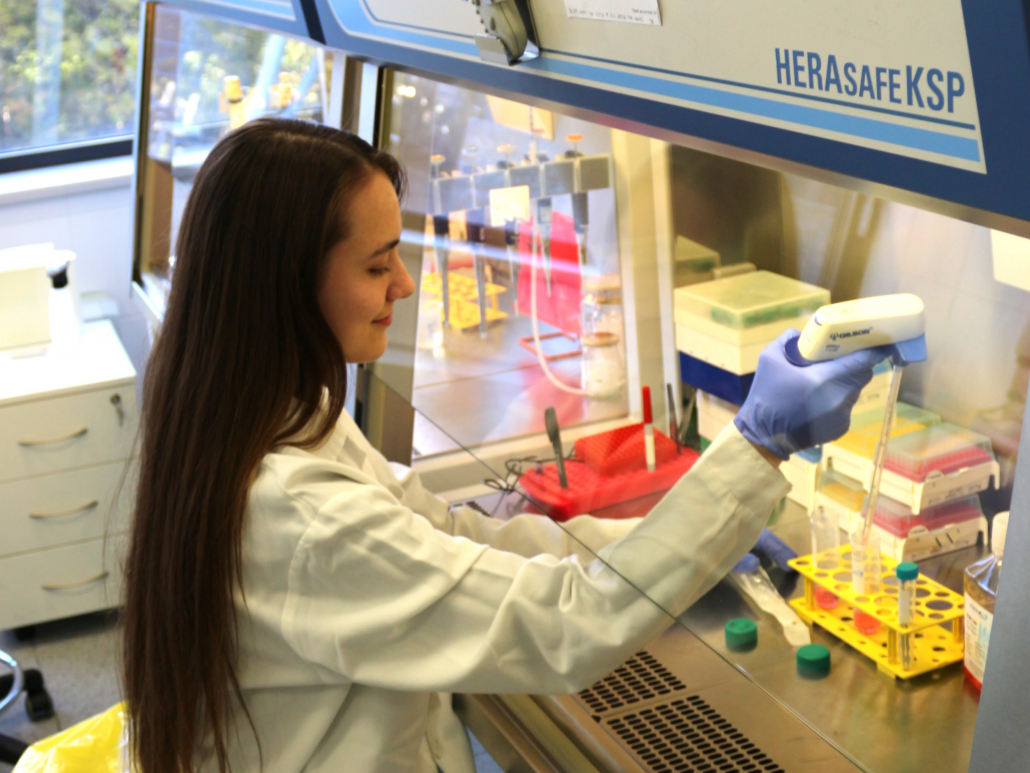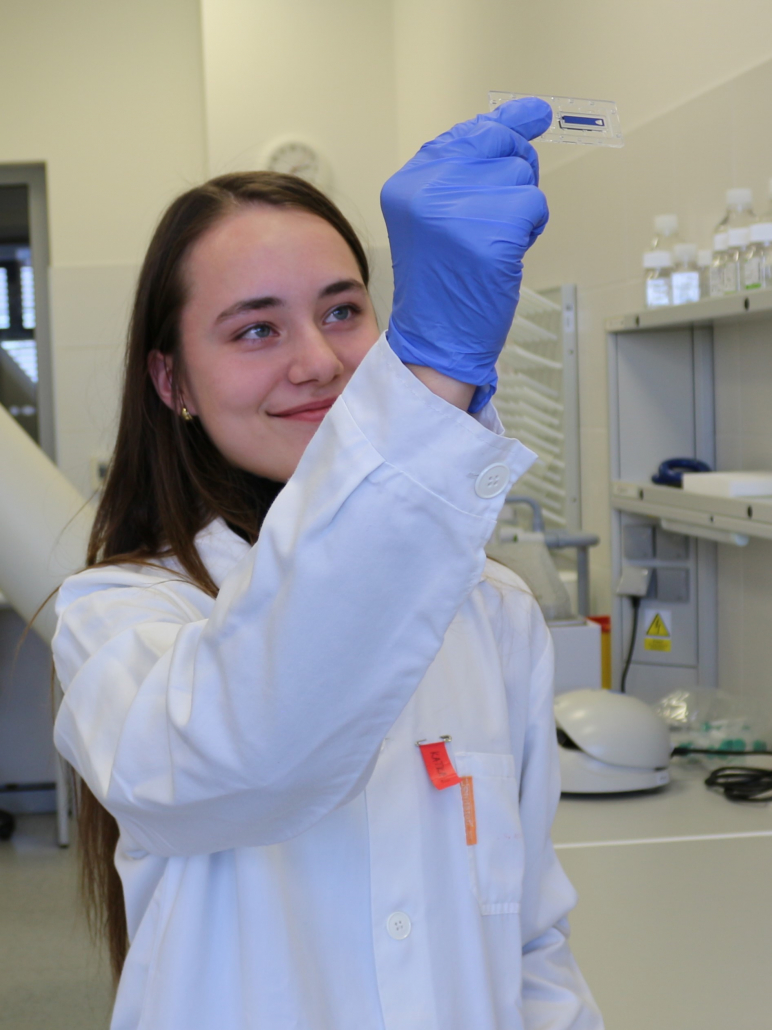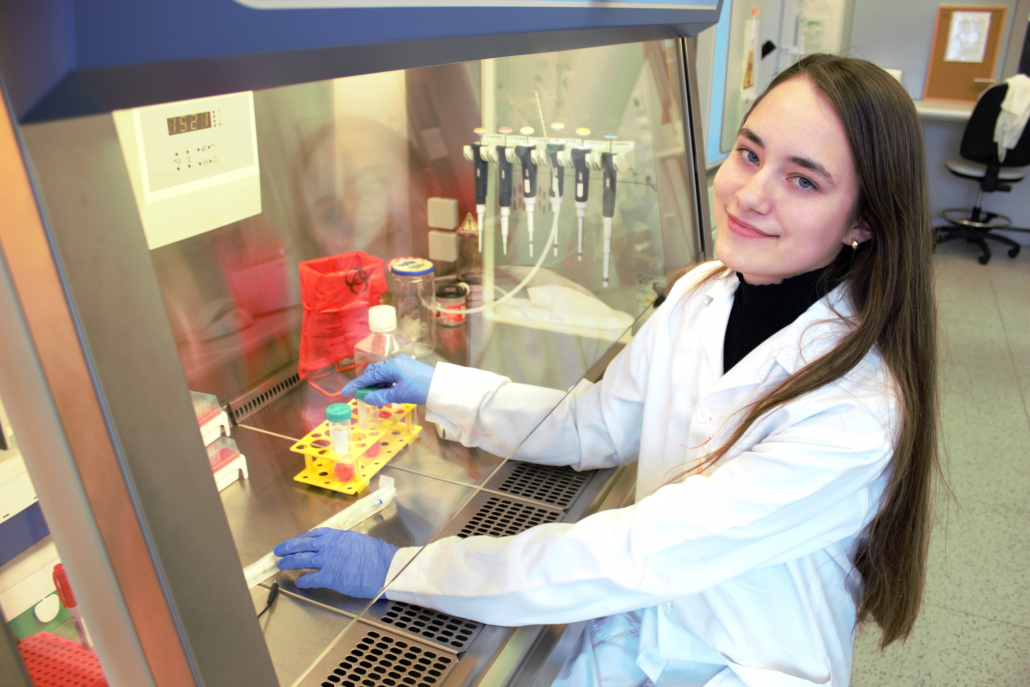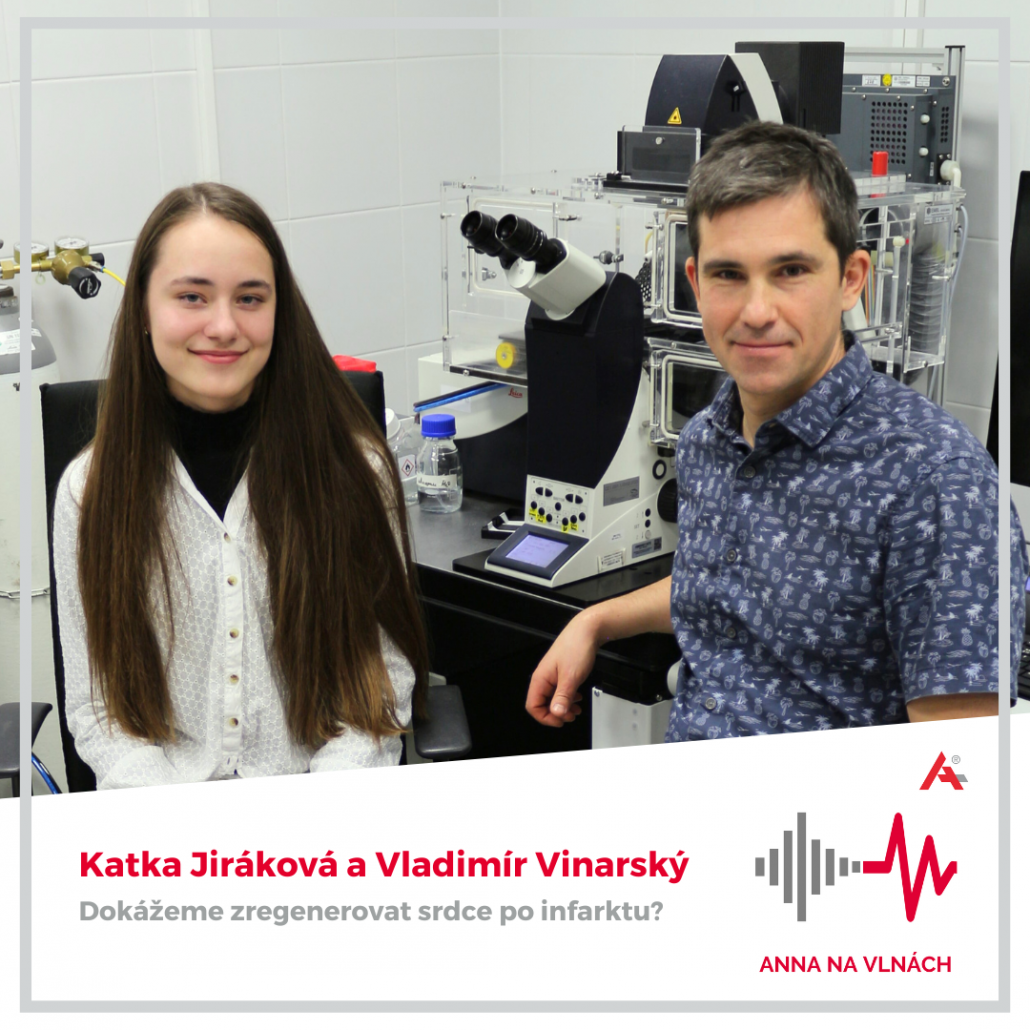PODCAST: “One Day, We Might Be Able to Regenerate the Heart After a Heart Attack,” Says Awarded 17-year-old Scientist Katka Jiráková
She is only 17 years old, and she is already awarded for her research. Katka Jiráková works at the International Clinical Research Center (ICRC), a joint facility of the St. Anne’s University Hospital and the Faculty of Medicine of Masaryk University, in the Mechanobiology of Diseases team. Her mentor is scientist Dr. Vladimír Vinarský. Recently, she received the Česká hlavička Award for her work on the impact of the YAP1 protein on the regeneration of heart cells after a heart attack. Now, along with Vladimír, she shared insights into her successful research with us.
Listen to the new episode of Anna na vlnách podcast on Spotify!
Or enjoy reading the interview:
Katka, you’re not even 18 years old, and you’re already part of an established research team. How did you manage to become a part of it?
Katka: When I started engaging in research at ICRC, I was 16. In my first year of high school, I was interested in medicine and was considering studying it after graduation. I got into research through online seminars of the ICRC Academy, where they also mentioned the opportunity to apply for an internship in selected research teams.
And you chose the team of Mechanobiology of Diseases. Vladimír, could you briefly outline what your team is focused on?
Vladimír: We are dedicated to researching cells and how they can perceive various mechanical stimuli and respond to them. One of the mechanically most active organs is the heart. We have been long-term focused on treating heart diseases and understanding how these diseases are related to mechanosignaling in cardiac muscle cells, or cardiomyocytes. Katka smoothly integrated into one of the research branches of our group.
What were you working on in the team, Katka?
Katka: I was addressing the influence of the YAP1 protein on heart cells, specifically how this protein affects the expression of proteins specific to cardiomyocytes, and also exploring ways to enhance its transcriptional activity.

What does that mean in practice? What happens when the transcriptional activity of the YAP1 protein increases in heart cells?
Katka: It’s about how this protein influences the production of other proteins and how we could increase the levels of those target proteins. An increase in these proteins would lead to the regeneration of our hearts. The YAP1 protein has the potential to restore the division of heart cells, as they typically do not divide in the adult heart. It was essential for us to understand what this protein causes in heart cells. YAP1 is mechanosensitive, so we aimed to determine its impact on various mechanosignaling pathways.
What kind of protein is YAP1, actually? Do we have it regularly in our bodies?
Katka: We don’t. Or, to be more precise, yes, but only during intrauterine development. However, as heart cells mature, this protein is deactivated. So, we can find it in the adult heart, but in too small amounts to have any significant effect.
So, until what age can our heart cells divide on their own?
Katka: I think up to seven days after birth.
Vladimír: Yes, roughly after birth, the regenerative capacity of the heart ends.

So, in your research, did you try to induce cells to divide in the heart of an adult human?
Vladimír: We were investigating the influence of the YAP1 protein on heart cells, which means studying the proteins expressed by the cells and their subsequent behavior. We compared cardiomyocytes that have the YAP1 protein with those that don’t, and then with those where the YAP1 protein was reactivated.
And how does such activation of the protein occur?
Vladimír: Mechanically. We can activate this protein by mechanically straining the cells, which, to some extent, happens naturally in the heart. However, we don’t know the extent to which it occurs and what positive effect it has. In the laboratory, we are capable of reapplying this protein to the cells from the outside through genetic manipulation.
So, is it like a protein shake for our hearts?
Vladimír: Although we haven’t published these experiments yet, and it’s not one hundred percent confirmed, we believe that YAP1 protein helps heart cells store other proteins in structures called sarcomeres, which are essential for cardiac contraction. So, it seems that if we had a larger amount of YAP1 protein in the heart, the cells would become stronger.
Can we say in layman’s terms that it’s about strengthening the heart?
Vladimír: If we wanted to simplify it a lot, then yes, essentially, our goal is to strengthen the heart and consequently make it last longer for patients.

How does such research on heart cells actually looks like? Are you studying cells from real patients or perhaps animal cells?
Vladimír: In our laboratory, we take advantage of significant progress made in the last approximately twenty years. We use stem cells, from which we can create fully functional cardiomyocytes in the lab, and from these artificially prepared heart cells, we can create various models of heart tissue. We subject these models to mechanical stress or expose them to the effects of various drugs, then observe their reaction. We can examine this at both the level of gene expression and based on functional properties, using live cell microscopy to see the force with which they contract. Additionally, we measure other electrophysiological parameters. We are very capable of preparing artificial human heart muscle cells. However, a big challenge in this field is how to create an artificial model of the entire heart. The heart is not just muscle cells; it also includes connective tissue, nerve cells, blood vessel cells that ensure blood supply, and more. Another significant milestone will be when we manage to create an entire artificial heart tissue. All cell types communicate, influence each other, and react to stress.
If we were to translate this into practice, for example, considering the state after a myocardial infarction, where the heart is weakened and scars remain, could the YAP1 protein be applied as a treatment to restore the heart to its original state?
Katka: Given that it would restore the division of heart cells, it should lead to the proliferation of cardiac cells in the area where we observe a loss of cells and a poorer contraction ability after a heart attack. Instead of the proliferation of fibroblasts, which are connective tissue cells, cardiac cells with the ability to contract effectively would start to divide. Therefore, the heart would gain the ability to regenerate itself.
Would it also have an impact on mortality from heart disease? After all, such a heart attack is among the most common killing disease in Europe…
Katka: I think so because heart failure often occurs in patients who have experienced multiple myocardial infarctions, meaning their hearts are damaged to a greater extent or at multiple locations. If the division of heart cells were restored, the tissue could heal, and the heart could function normally.
Katka, what experiences are you taking from your internship at ICRC? Has working in research excited you? Would you like to pursue it in the future?
Katka: I enjoy it a lot, and I would definitely like to continue. I haven’t answered the question of what to study in the future for myself yet, but I would prefer to focus on research rather than clinical practice.
If someone reading this interview is inspired by your story, could you give them an idea of how to get such an internship and what it looks like in practice? How time-consuming is it? Is it possible to combine it with high school?
Katka: This is quite individual, and it depends a lot on agreement with the supervisor and how much time you are willing to dedicate to it. I’m fortunate that our high school strongly supports extracurricular activities, and I have an individual study plan. When you start an experiment, you need enough time for it. You can’t begin an hour after regular classes; you would end up finishing late at night.



